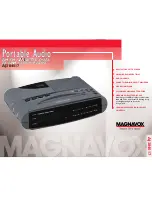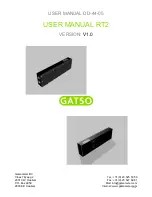
Document 1-0479-013 Rev B
37
Q3.
“
I am able to link to a remote unit within line of sight when the transceiver I have is outside.
However, as soon as I walk inside with it I lose the link, even if I place the transceiver by the
window which faces the remote unit.”
Many modern buildings use energy efficient glass which wreaks havoc on RF signals. This
glass contains a metal film which is very effective in blocking all radio waves. If your
situation is as described above, the preferable solution is to install an antenna outdoors.
Q4.
“I have several transceivers set up to communicate with each other in a point-to-multipoint
mode, yet they are not establishing contact.”
In a Multipoint system there are two critical parameters which must be set correctly to
establish a communication link.
1. The slave’s Call Book must contain the ID number or Network ID of the master and/or
repeaters to which it will be communicating.
2. All radios must be set to run at the same RF data rate. Unlike point-to-point systems,
slaves in a Multipoint system do not change their RF data rate to match the master’s rate
Q5.
“In bench testing several units in a Multipoint system, it appears that they are not
communicating through the Multipoint repeater. When all units are powered the slaves’
Carrier Detect lights are green, indicating a connection, yet when I unplug the repeater
those slaves set up to communicate through that repeater remain connected.
In a Multipoint system a slave will attempt to communicate with any master or repeater
(which looks like a master in a Multipoint system) that is in its Call Book. Therefore, it may
be that the slaves are communicating with the repeater when it is powered, and when it is
unplugged they are establishing a link with the master. To test whether or not this is what
is occurring go into the Call Book of the slaves which are set up to communicate through the
repeater and remove the master’s ID number. When all units are powered the slaves’ Carrier
Detect lights should be green, when the repeater is unplugged the slaves should lose contact
and Carrier Detect should turn red.
Q6.
“My transceivers have established a solid connection as indicated by the LEDs, yet the
application I am running is not transmitting and/or receiving data correctly.”
The quickest acid test in a situation like this is to try to get the application up and running
using an RS232 null modem cable before deploying the AutoWAVE in the field.
AutoWAVE essentially functions as a null modem cable. If the application will not work
with a hard wire connection then it will not work with AutoWAVE, and the problem lies
within the application or hardware (such as the computer serial ports)
Содержание AutoWAVE 1-0479-013
Страница 1: ...Part of Thermo Fisher Scientific AutoWAVE Handheld Radio User Guide P N 1 0479 013 Revision B...
Страница 2: ......
Страница 3: ...AutoWAVE Handheld Radio User Guide P N 1 0479 013 Revision B...
Страница 4: ......
Страница 6: ...This page intentionally left blank...


































